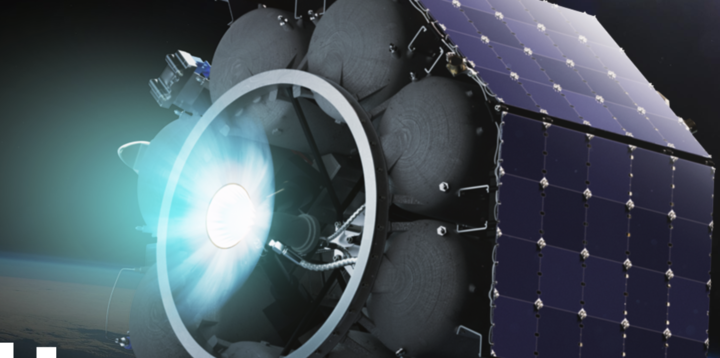Launcher’s orbiter spacecraft faces setback and loss of vehicle after successful liftoff
Launcher, an American aerospace company, faced a setback when its Orbiter spacecraft encountered a software anomaly and lost another vehicle right after a successful liftoff. The affected spacecraft — Orbiter SN3 — had been designed to carry smaller satellites, like cubesats, and position them in their orbits.
Software anomaly causes uncontrollable rotation and power issues
Orbiter SN3 launched successfully on a SpaceX Falcon 9 on June 12 but soon started spinning uncontrollably after separating from its launch vehicle. The company received telemetry indicating a high rate of rotation caused by an anomaly in the onboard attitude control system. This rotation prevented the solar panels from receiving sunlight, leading to critically low fuel and battery levels.
Customer payloads deployed early to mitigate risks
To avoid non-deployment, Launcher made the decision to deploy customer payloads earlier than scheduled. The spacecraft carried payloads from three customers: Starfish Space’s Otter Pup demo satellite, cubesats from Innova Space, and TRL11, a space startup. All three customers confirmed contact with their spacecraft, but due to the high rotation, Otter Pup couldn’t dock with SN3.
In an attempt to save Orbiter SN3, Launcher shut down all non-critical vehicle systems to achieve a net power-positive state. Although the vehicle complied, it remained slightly power negative. Sadly, the state of charge gradually decreased, resulting in a loss of contact with the spacecraft.
Recovery efforts underway as Launcher implements corrective actions
Launcher continues to make efforts to recover Orbiter SN3 and establish contact. The company apologized to its customers and their teams for the mission degradation caused by the incident. They have started implementing corrective actions to prevent similar anomalies in future missions and improve the vehicle’s robustness.
This isn’t the first setback for Launcher. In February, their first spacecraft, SN1, experienced an orientation control issue that affected its power generation after launch. Despite these challenges, Launcher looks to the future. Orbiter SN5 is scheduled for a February 2024 launch as part of SpaceX’s Transporter-10 mission. Additionally, the company has planned two more flights for next year.
Launcher’s determination to overcome setbacks and continue making progress in the aerospace industry is evident. They are working diligently to address the software issue and ensure the success of future missions.
FacebookTwitterLinkedin
end of article

Launcher, an American aerospace company, faced a setback when its Orbiter spacecraft encountered a software anomaly and lost another vehicle right after a successful liftoff. The affected spacecraft — Orbiter SN3 — had been designed to carry smaller satellites, like cubesats, and position them in their orbits.
Software anomaly causes uncontrollable rotation and power issues
Orbiter SN3 launched successfully on a SpaceX Falcon 9 on June 12 but soon started spinning uncontrollably after separating from its launch vehicle. The company received telemetry indicating a high rate of rotation caused by an anomaly in the onboard attitude control system. This rotation prevented the solar panels from receiving sunlight, leading to critically low fuel and battery levels.
Customer payloads deployed early to mitigate risks
To avoid non-deployment, Launcher made the decision to deploy customer payloads earlier than scheduled. The spacecraft carried payloads from three customers: Starfish Space’s Otter Pup demo satellite, cubesats from Innova Space, and TRL11, a space startup. All three customers confirmed contact with their spacecraft, but due to the high rotation, Otter Pup couldn’t dock with SN3.
In an attempt to save Orbiter SN3, Launcher shut down all non-critical vehicle systems to achieve a net power-positive state. Although the vehicle complied, it remained slightly power negative. Sadly, the state of charge gradually decreased, resulting in a loss of contact with the spacecraft.
Recovery efforts underway as Launcher implements corrective actions
Launcher continues to make efforts to recover Orbiter SN3 and establish contact. The company apologized to its customers and their teams for the mission degradation caused by the incident. They have started implementing corrective actions to prevent similar anomalies in future missions and improve the vehicle’s robustness.
This isn’t the first setback for Launcher. In February, their first spacecraft, SN1, experienced an orientation control issue that affected its power generation after launch. Despite these challenges, Launcher looks to the future. Orbiter SN5 is scheduled for a February 2024 launch as part of SpaceX’s Transporter-10 mission. Additionally, the company has planned two more flights for next year.
Launcher’s determination to overcome setbacks and continue making progress in the aerospace industry is evident. They are working diligently to address the software issue and ensure the success of future missions.
FacebookTwitterLinkedin
end of article
